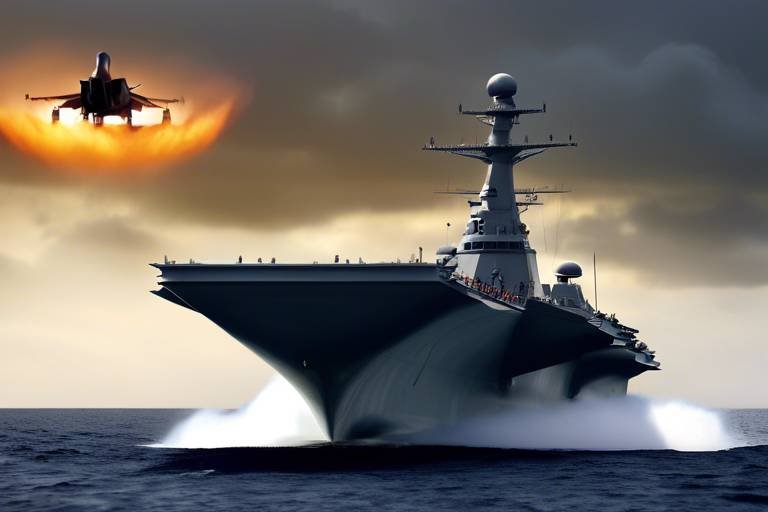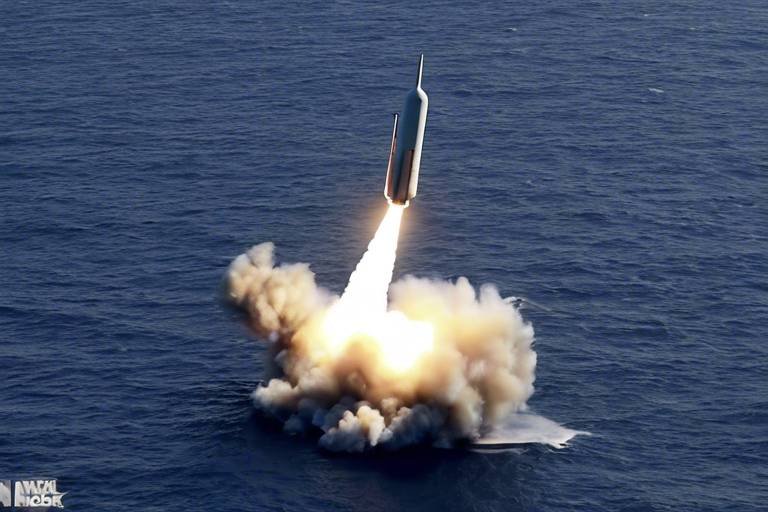The Role of Advanced Simulation Technologies in Military Training
In today's rapidly evolving military landscape, the need for effective training methodologies has never been more critical. Advanced simulation technologies have emerged as a game-changer, revolutionizing the way military personnel prepare for real-world operations. These technologies are not just a luxury; they are a necessity for maintaining operational readiness and effectiveness in an increasingly complex environment. Imagine a soldier stepping into a training scenario that mimics the chaos of battle, complete with realistic sounds, sights, and even the emotional stress of real combat. This is the power of simulation technologies, and it’s transforming military training in unprecedented ways.
As we delve deeper into this topic, it’s essential to understand that these technologies offer a multitude of benefits that traditional training methods simply cannot match. From cost-effectiveness to risk reduction, the advantages are numerous. For example, advanced simulations allow military personnel to engage in high-stakes scenarios without the inherent dangers of live exercises, thus preserving lives while enhancing skills. Furthermore, the ability to replicate complex scenarios enables trainees to develop critical thinking and decision-making skills in a controlled environment. This is akin to a pilot flying a simulator before ever taking the controls of a real aircraft—practice makes perfect, and simulation provides the safest means to achieve that perfection.
Moreover, the integration of these technologies into military training programs is not just about adding new tools; it’s about fundamentally changing the way we approach training. The immersive experiences offered by simulation technologies can lead to improved retention of knowledge and skills, which is crucial when lives are on the line. As we explore the various types of simulation technologies, such as virtual reality (VR) and augmented reality (AR), we will uncover how each contributes uniquely to enhancing the training experience and preparing military personnel for the challenges they may face in the field.
Advanced simulation technologies offer numerous advantages, including cost-effectiveness, risk reduction, and the ability to replicate complex scenarios, thereby enhancing training outcomes for military personnel.
Various types of simulation technologies are utilized in military training, such as virtual reality, augmented reality, and computer-based simulations, each providing unique immersive experiences for trainees.
Virtual reality (VR) creates immersive training environments that allow soldiers to practice skills and tactics in a safe, controlled setting, significantly improving their readiness for real-world scenarios.
VR is used in various military applications, from combat training to leadership development, enabling personnel to experience realistic situations without the associated risks of live training exercises.
Despite its benefits, implementing VR technology in military training faces challenges, including high costs, technological limitations, and the need for proper training to maximize its effectiveness.
Augmented reality (AR) enhances real-world environments with digital information, providing soldiers with critical data in real time, which can improve decision-making and situational awareness during training exercises.
Integrating advanced simulation technologies with traditional training methods creates a comprehensive training program that enhances learning experiences and better prepares military personnel for diverse operational challenges.
Blended learning approaches combine classroom instruction with simulation-based training, allowing for a more holistic understanding of military tactics and strategies while catering to different learning styles.
Evaluating the effectiveness of simulation-based training is essential for continuous improvement, utilizing metrics and feedback to refine training programs and ensure they meet the evolving needs of military operations.
- What are simulation technologies? Simulation technologies are advanced tools that create realistic training environments for military personnel, allowing them to practice skills and tactics safely.
- How does virtual reality enhance military training? Virtual reality immerses trainees in lifelike scenarios, helping them develop critical skills and decision-making abilities without the risks associated with live training.
- What challenges exist in implementing simulation technologies? High costs, technological limitations, and the need for proper training to effectively use these technologies are some of the challenges faced.
- How do augmented reality applications benefit soldiers? Augmented reality provides real-time data and information, improving situational awareness and decision-making during training exercises.

Benefits of Simulation Technologies
Advanced simulation technologies have revolutionized military training, bringing a plethora of benefits that enhance the overall effectiveness of training programs. One of the most significant advantages is cost-effectiveness. Traditional training methods often require extensive resources, including personnel, equipment, and facilities. In contrast, simulation technologies allow military organizations to conduct realistic training scenarios without the high costs associated with live exercises. This means that funds can be allocated more efficiently, ultimately leading to improved operational readiness.
Another critical benefit is risk reduction. Training in real-world environments can expose personnel to dangerous situations. By utilizing simulation technologies, soldiers can practice their skills in a safe and controlled environment. This not only minimizes the potential for injury but also allows trainees to experiment with different strategies and tactics without the fear of real-world consequences. Imagine being able to pilot a fighter jet or lead a platoon through hostile territory without ever leaving a training facility—this is the power of simulation.
Moreover, simulation technologies provide the ability to replicate complex scenarios. Military operations are often unpredictable and multifaceted, requiring personnel to adapt quickly to changing conditions. With advanced simulations, trainers can create intricate environments that mimic real-life challenges, enabling soldiers to develop critical thinking and problem-solving skills. For instance, consider a scenario where soldiers must navigate through a simulated urban battlefield filled with civilians, obstacles, and enemy combatants. This level of realism prepares them for the unexpected situations they may face in actual combat.
Furthermore, the immersive nature of these technologies significantly enhances training outcomes. Trainees are more engaged and focused when they can interact with a realistic environment, leading to better retention of skills and knowledge. Studies have shown that individuals who undergo simulation training often perform better in real-world situations than those who rely solely on traditional methods. This is akin to learning to ride a bike—it's one thing to read about it, but actually doing it in a safe space makes all the difference.
In summary, the benefits of advanced simulation technologies in military training are multifaceted, ranging from cost savings and risk reduction to the ability to replicate complex scenarios that enhance overall training effectiveness. As military organizations continue to embrace these technologies, the future of training looks promising, with the potential to produce highly skilled and adaptable personnel ready to face any challenge.
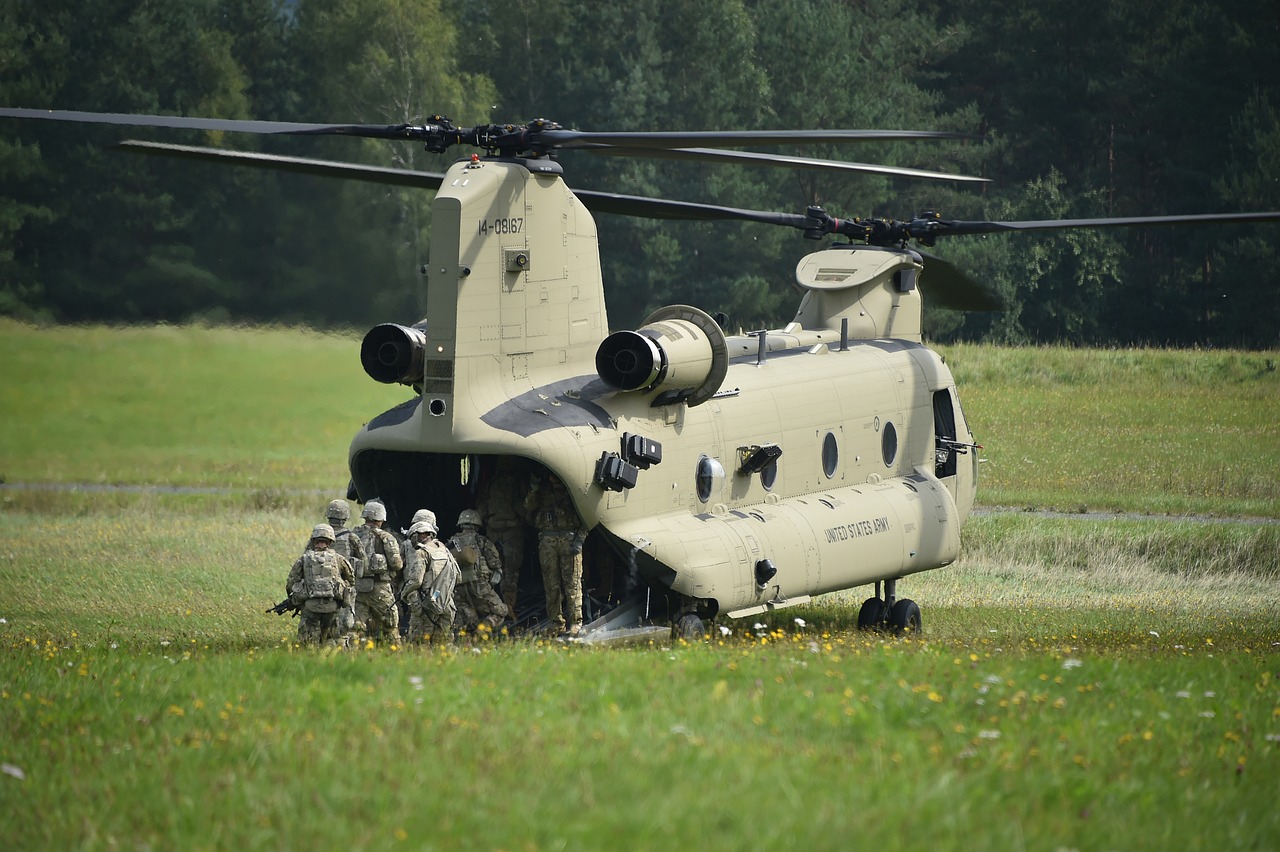
Types of Simulation Technologies
When it comes to military training, the landscape is evolving rapidly thanks to various simulation technologies. These technologies are not just fancy gadgets; they are transforming the way soldiers prepare for real-world scenarios. Imagine stepping into a world where you can practice combat strategies without the fear of actual danger. Sounds thrilling, right? This is precisely what advanced simulation technologies offer. The main types include Virtual Reality (VR), Augmented Reality (AR), and computer-based simulations. Each of these technologies provides unique immersive experiences that cater to different aspects of military training.
Virtual Reality (VR) is perhaps the most well-known type of simulation technology. It creates an entirely immersive environment where soldiers can practice various skills and tactics. Picture this: a soldier dons a VR headset and suddenly finds themselves in a lifelike battlefield. They can engage in tactical maneuvers, manage resources, and even face virtual enemies, all while in a safe and controlled setting. This technology allows for repeated practice of complex scenarios, enabling soldiers to hone their skills without the risks associated with live training exercises.
On the other hand, Augmented Reality (AR) takes a different approach by overlaying digital information onto the real world. Think of it as having a digital assistant right in your field of vision. Soldiers can receive critical data, such as maps, enemy positions, and mission objectives, all while navigating through actual terrain. This immediate access to information enhances decision-making and situational awareness, making soldiers more effective in the field. It's like having a superpower that helps you see the battlefield in a new light!
Additionally, there are computer-based simulations that provide a more traditional approach to training. These simulations often involve software programs that mimic various military operations and scenarios. They can be used for everything from tactical planning to logistics management. While they may not offer the same immersive experience as VR or AR, they are incredibly valuable for understanding complex systems and processes.
To summarize, the types of simulation technologies utilized in military training are:
- Virtual Reality (VR): Immersive training environments for skill practice.
- Augmented Reality (AR): Enhances real-world environments with digital data.
- Computer-based Simulations: Mimics military operations for strategic understanding.
As we move forward, the integration of these technologies will only become more sophisticated. Imagine a future where soldiers can seamlessly transition between VR, AR, and traditional methods, creating a multi-faceted training experience that prepares them for any challenge. The potential is enormous, and the future of military training looks incredibly promising!
Q1: What is the primary benefit of using simulation technologies in military training?
A1: The primary benefit is the ability to replicate complex scenarios in a safe environment, which enhances training outcomes and operational readiness.
Q2: Can simulation technologies replace traditional training methods?
A2: While simulation technologies significantly enhance training, they are best used in conjunction with traditional methods for a comprehensive learning experience.
Q3: What are the challenges faced in implementing VR in military training?
A3: Challenges include high costs, technological limitations, and the necessity for proper training to maximize the effectiveness of VR systems.
Q4: How does augmented reality improve decision-making for soldiers?
A4: Augmented reality provides real-time data and critical information, allowing soldiers to make informed decisions quickly during training exercises.
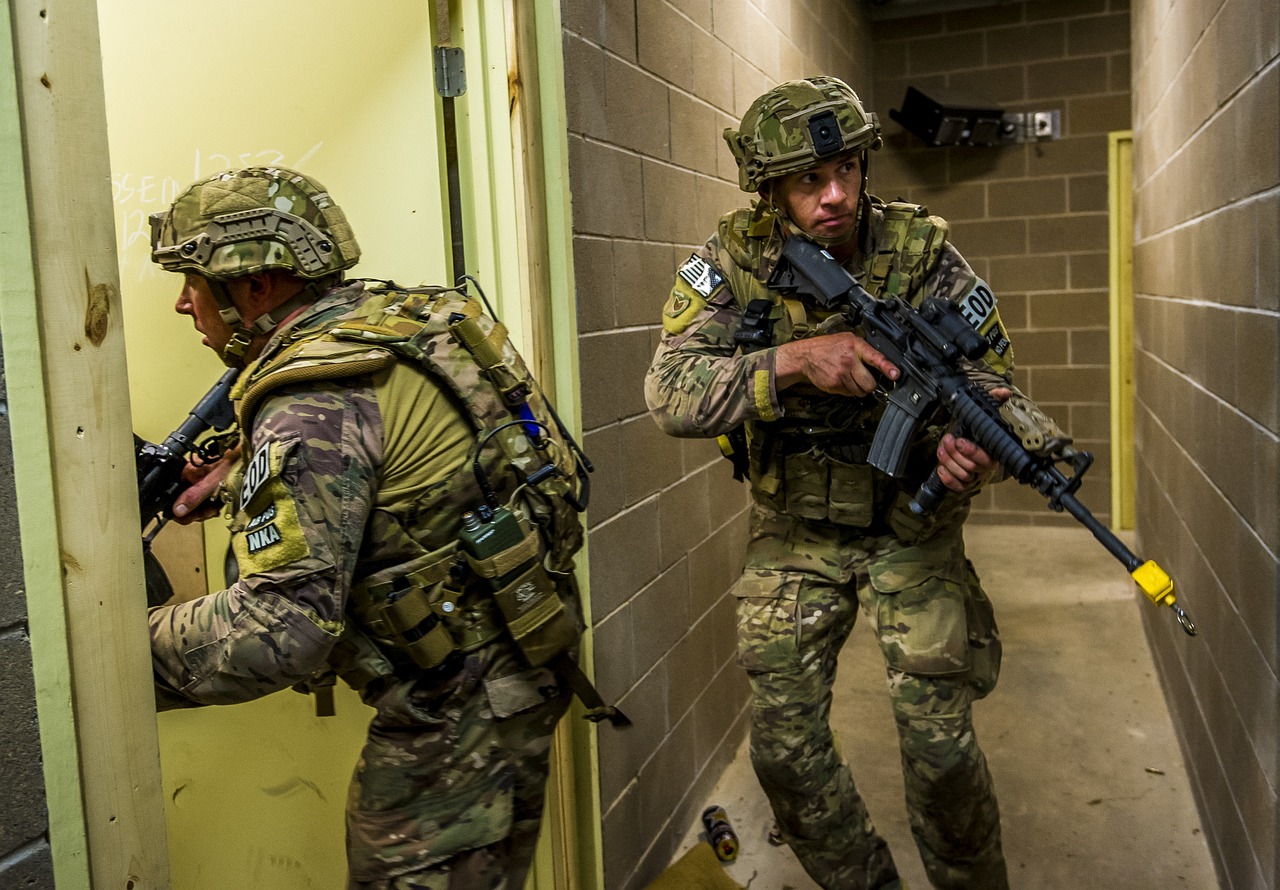
Virtual Reality in Training
Virtual reality (VR) has revolutionized the way military training is conducted, offering an immersive experience that traditional methods simply cannot match. Imagine stepping into a digital world where you can practice combat scenarios, tactical maneuvers, and even leadership decisions without the inherent risks of live exercises. This is the power of VR. It creates a safe, controlled environment where soldiers can hone their skills and prepare for real-world situations, which is crucial for operational readiness.
One of the most compelling aspects of VR is its ability to replicate complex scenarios that soldiers might face in the field. For instance, trainees can engage in simulated urban warfare, where they navigate through realistic cityscapes, encounter enemy forces, and make split-second decisions. This kind of training is invaluable because it allows soldiers to experience the chaos of battle while learning to maintain composure and execute their training effectively.
Moreover, VR training can be tailored to individual needs. Each soldier can progress at their own pace, allowing for a personalized learning experience. This adaptability is particularly beneficial in a military context, where every individual has different strengths and areas for improvement. In a typical VR training session, participants might engage in various activities, such as:
- Combat simulations
- Weapon handling and maintenance
- Emergency medical response
- Leadership exercises
However, while the advantages of VR are clear, there are challenges that come with its implementation in military training. High costs associated with the technology, the need for ongoing maintenance, and the requirement for proper training on how to use VR systems effectively can pose significant hurdles. Additionally, there is a learning curve for both instructors and trainees, as they must become familiar with the technology and its applications.
Despite these challenges, the potential benefits of VR in military training cannot be overstated. As technology continues to evolve, it is expected that VR will become even more sophisticated, offering increasingly realistic simulations that can further enhance training outcomes. The future of military training lies in the integration of these advanced technologies, paving the way for a new era of operational readiness and effectiveness.

Applications of VR
Virtual reality (VR) has revolutionized military training by providing a safe and controlled environment where soldiers can hone their skills. One of the most significant applications of VR is in combat training. In these immersive scenarios, trainees can engage in simulated battles, allowing them to practice tactics and decision-making under pressure without the inherent risks of live exercises. Imagine being able to experience the chaos of a battlefield while remaining completely safe—this is the power of VR.
Moreover, VR plays a crucial role in leadership development. By simulating high-stakes situations, military leaders can practice their decision-making skills in real-time. This not only enhances their ability to lead troops but also fosters teamwork and communication among unit members. For example, a VR scenario might involve a complex mission requiring coordination among various units, helping leaders to develop strategies that could be applied in actual operations.
Another fascinating application of VR is in medical training. Combat medics can use VR to practice life-saving techniques in a variety of scenarios, from treating injuries on the battlefield to performing critical care. This hands-on experience is invaluable, as it prepares medics to act swiftly and effectively in real-life emergencies.
Additionally, VR is used for pre-deployment training. Soldiers can familiarize themselves with the environments and cultural contexts of the regions they will be deployed to. This immersive exposure helps to reduce culture shock and enhances operational effectiveness, making it easier for troops to adapt once they arrive on-site.
In summary, the applications of VR in military training are vast and varied. From combat scenarios to leadership and medical training, the technology not only improves skills but also prepares soldiers for the complexities of real-world operations. As VR technology continues to evolve, its potential to enhance military readiness will only grow.

Challenges of Implementing VR
While virtual reality (VR) has revolutionized military training, its implementation is not without challenges. One of the most significant hurdles is the cost associated with acquiring and maintaining advanced VR systems. High-quality VR equipment can be expensive, and the ongoing costs for software updates and hardware maintenance can strain military budgets. This financial burden can deter many military organizations from fully integrating VR into their training programs.
Another challenge is the technological limitations that come with VR. Not all military bases have the necessary infrastructure to support advanced VR systems. Issues such as inadequate bandwidth, outdated hardware, or lack of technical support can hinder the effectiveness of VR training. Moreover, as technology rapidly evolves, keeping up with the latest advancements can be daunting, leading to potential obsolescence of existing systems.
Additionally, there’s a need for proper training for instructors and trainees alike. Implementing VR technology requires personnel who are not only familiar with the equipment but also skilled in how to integrate it into training scenarios effectively. If the trainers are not adequately prepared, the potential benefits of VR can be lost, leaving trainees frustrated and unprepared for real-world situations.
Furthermore, there’s the challenge of acceptance among military personnel. Some may be skeptical about the effectiveness of VR compared to traditional training methods. It’s crucial to foster a culture that embraces innovation while addressing the concerns of those who may feel uncomfortable with new technologies. This cultural shift takes time and consistent effort to ensure that everyone understands the value of VR training.
Finally, there are health and safety concerns associated with prolonged VR use. Issues such as motion sickness, eye strain, and disorientation can affect trainees, especially if they are not accustomed to virtual environments. It’s vital to implement guidelines and best practices to mitigate these risks, ensuring that trainees can benefit from VR without compromising their well-being.
In summary, while the potential of VR in military training is immense, overcoming these challenges is essential for successful implementation. Addressing cost, technology, training, acceptance, and health concerns is crucial for military organizations looking to harness the power of VR effectively.
- What are the main benefits of using VR in military training?
VR allows for immersive training experiences, enabling soldiers to practice in realistic environments without the risks associated with live exercises. - How does VR compare to traditional training methods?
While traditional methods provide essential hands-on experience, VR offers a safe, controlled environment for practicing complex scenarios. - What steps can be taken to address the challenges of implementing VR?
Investing in infrastructure, providing comprehensive training for personnel, and fostering a culture of innovation can help overcome these challenges. - Are there health risks associated with VR training?
Yes, prolonged use can lead to motion sickness and eye strain; therefore, guidelines should be established to mitigate these risks.
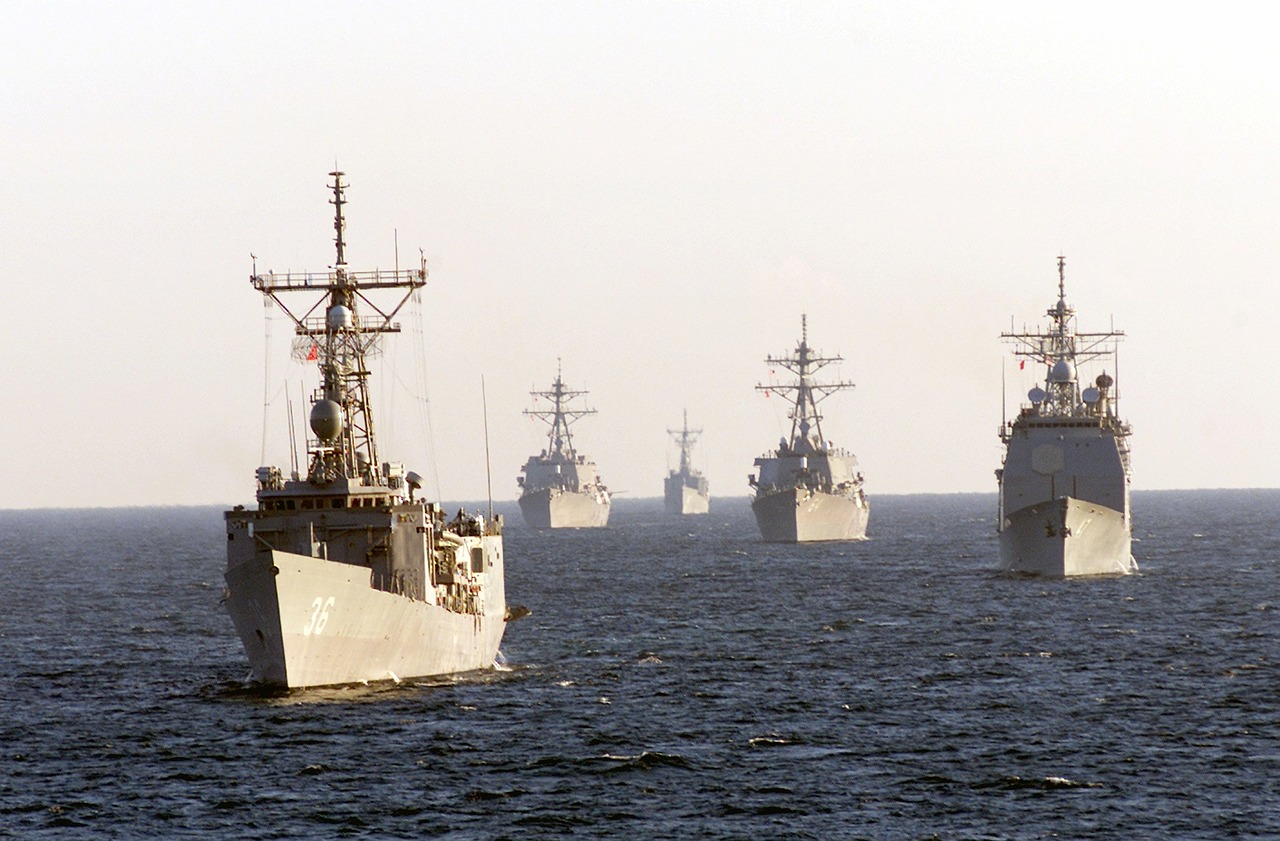
Augmented Reality in Training
Augmented Reality (AR) is revolutionizing military training by seamlessly blending the physical world with digital information. Imagine a soldier in the field, equipped with AR glasses that overlay crucial data right in their line of sight. This technology empowers soldiers to make informed decisions quickly, enhancing their situational awareness in real-time. For instance, during a training exercise, AR can provide tactical maps, enemy locations, and mission objectives, all while soldiers navigate through real environments. This not only improves their understanding of the battlefield but also helps them to react faster and more effectively.
The applications of AR in military training are vast and varied. From providing maintenance instructions on complex machinery to simulating enemy movements during tactical drills, AR creates a more engaging and interactive learning experience. By integrating real-time data and simulations into the training process, soldiers can practice their responses to various scenarios without the risks associated with live training. This is akin to playing a video game where the stakes are high, but the consequences are mitigated. The immersive nature of AR helps to bridge the gap between theoretical knowledge and practical application.
However, the implementation of AR technology is not without its challenges. One of the primary concerns is the need for robust technological infrastructure to support these advanced systems. Training personnel to effectively use AR tools is also crucial; if soldiers are not adequately trained, the benefits of AR can be diminished. Moreover, the cost of developing and maintaining AR systems can be significant, raising questions about budget allocations within military organizations. Nevertheless, the potential benefits of AR in enhancing training outcomes make it a worthy investment.
In summary, Augmented Reality presents an exciting frontier in military training, offering innovative solutions that improve learning outcomes and operational readiness. By providing real-time data and immersive experiences, AR not only enhances the training process but also prepares soldiers for the complexities of modern warfare. As technology continues to advance, it is essential for military organizations to embrace these innovations and integrate them into their training programs for a more effective and prepared force.
- What is Augmented Reality in military training? Augmented Reality (AR) enhances real-world environments with digital information, providing soldiers with critical data in real time during training exercises.
- How does AR improve situational awareness? AR overlays important information directly in the soldier's line of sight, allowing for quicker decision-making and better understanding of the battlefield.
- What are the challenges of implementing AR technology? Key challenges include the need for advanced technological infrastructure, proper training for personnel, and the costs associated with development and maintenance.
- Can AR be integrated with other training methods? Yes, AR can be effectively combined with traditional training methods, creating a blended learning approach that enhances overall training effectiveness.

Integration with Traditional Training Methods
In the ever-evolving landscape of military training, the integration of advanced simulation technologies with traditional training methods is nothing short of revolutionary. Imagine a world where soldiers don’t just read about tactics or watch videos; instead, they immerse themselves in lifelike scenarios that enhance their understanding and application of military strategies. This blending of methodologies not only enriches the training experience but also prepares personnel for the unpredictable nature of real-world operations.
By combining traditional methods, such as classroom instruction and physical drills, with cutting-edge simulations, military training programs can cater to various learning styles. For instance, while some individuals grasp concepts better through reading and discussion, others may thrive in hands-on environments. The integration of simulation technologies allows for a more holistic approach to learning, where theoretical knowledge is immediately applied in a practical setting. This synergy helps reinforce concepts and ensures that soldiers are not just passive recipients of information but active participants in their learning journey.
Moreover, this integration fosters a culture of adaptability. Soldiers are trained to think on their feet and respond to dynamic situations. Consider a scenario where troops are engaged in a simulated combat exercise. Traditional methods might teach them about squad formations and tactics, but the simulation enables them to experience the chaos of battle, make split-second decisions, and learn from their mistakes in real-time. This kind of experiential learning is invaluable, as it builds confidence and competence.
However, integrating advanced simulation technologies is not without its challenges. There’s a need for a seamless transition between different training modalities. For example, instructors must be well-versed in both traditional and simulation methods to guide trainees effectively. Additionally, the infrastructure to support these technologies must be robust, ensuring that simulations run smoothly without technical glitches that could disrupt the learning process.
To illustrate the benefits of this integration, consider the following table that outlines key advantages:
| Advantages | Traditional Training Methods | Simulation Technologies |
|---|---|---|
| Engagement | Passive learning through lectures | Active participation in realistic scenarios |
| Retention | Standard memorization techniques | Hands-on experience reinforces learning |
| Realism | Static drills and exercises | Dynamic, lifelike environments |
| Feedback | Delayed feedback from instructors | Immediate feedback from simulations |
In conclusion, the integration of advanced simulation technologies with traditional training methods is a game-changer for military training programs. By creating a comprehensive training environment that caters to various learning styles and prepares soldiers for real-world challenges, military organizations can enhance operational readiness and effectiveness. As technology continues to advance, the potential for even more innovative training solutions is limitless.
- What are the primary benefits of integrating simulation technologies with traditional training?
The primary benefits include enhanced engagement, improved retention of information, realistic training scenarios, and immediate feedback, all of which contribute to better-prepared military personnel.
- How do simulation technologies cater to different learning styles?
Simulation technologies allow for hands-on experience, which benefits kinesthetic learners, while also providing visual and auditory elements that can assist visual and auditory learners, respectively.
- What challenges are associated with implementing these technologies?
Challenges include the need for trained instructors, robust infrastructure, and ensuring a seamless transition between traditional and simulation-based training.

Blended Learning Approaches
Blended learning approaches represent a revolutionary shift in military training methodologies, merging traditional classroom instruction with cutting-edge simulation-based training. This combination allows military personnel to harness the best of both worlds, enhancing their understanding of complex military tactics and strategies. Imagine a scenario where a soldier learns about battlefield strategies in a classroom, then immediately applies those strategies in a simulated environment. It's like having a coach who not only teaches you the rules of the game but also lets you practice in a safe space before stepping onto the field.
One of the key advantages of blended learning is its ability to cater to different learning styles. Some individuals thrive in hands-on environments, while others may prefer theoretical knowledge. By integrating various teaching methods, military training can accommodate a diverse range of learners, ensuring that everyone has the opportunity to excel. For instance, visual learners benefit from simulations that provide immersive graphics and scenarios, while auditory learners gain from lectures and discussions on tactics.
Additionally, blended learning fosters a culture of continuous improvement. By combining traditional methods with simulations, trainers can gather real-time feedback and assess the effectiveness of their teaching strategies. This approach not only enhances the learning experience but also ensures that military personnel are well-prepared for the unpredictable nature of real-world operations. As military operations evolve, so too must the training methodologies, and blended learning offers a dynamic solution to meet these changing demands.
Moreover, the flexibility of blended learning allows for the incorporation of various technologies. For example, online modules can be utilized to teach theoretical concepts, while in-person sessions can focus on practical applications through simulations. This flexibility means that training can occur at any time and place, making it more accessible for military personnel who might be deployed or stationed in remote locations.
In conclusion, blended learning approaches are transforming military training by creating a comprehensive educational experience that enhances operational readiness. By combining classroom instruction with simulation-based training, military organizations can ensure that their personnel are not only knowledgeable but also capable of applying that knowledge in real-world scenarios. As we look to the future, embracing blended learning will be essential for developing agile, adaptable, and effective military forces.
- What is blended learning in military training?
Blended learning combines traditional classroom instruction with simulation-based training, allowing military personnel to learn and practice skills effectively. - How does blended learning benefit military personnel?
This approach caters to various learning styles, enhances understanding, and provides a safe environment for practicing tactics and strategies. - Can blended learning be adapted for different military branches?
Yes, blended learning is flexible and can be tailored to meet the specific needs of different military branches and their unique operational requirements. - What technologies are used in blended learning?
Technologies such as virtual reality (VR), augmented reality (AR), and online learning modules are commonly integrated into blended learning programs.

Evaluating Training Effectiveness
Evaluating the effectiveness of simulation-based training is crucial for ensuring that military personnel are not just going through the motions but actually gaining valuable skills and knowledge. This evaluation process involves a combination of quantitative metrics and qualitative feedback, which together create a comprehensive picture of how well the training is preparing soldiers for real-world scenarios. Think of it as tuning a musical instrument; without proper evaluation, the notes might sound off-key when it truly matters.
One of the primary methods for assessing training effectiveness is through the use of performance metrics. These metrics can include:
- Completion rates of training modules
- Time taken to complete various tasks
- Success rates in simulated missions
- Improvements in decision-making speed and accuracy
By analyzing these metrics, military trainers can identify areas where trainees excel and where they may need additional support. This data-driven approach not only highlights strengths but also pinpoints weaknesses that can be addressed in future training sessions.
Another essential aspect of evaluating training effectiveness is gathering feedback from participants. This qualitative data can provide insights that numbers alone cannot. Soldiers can share their experiences regarding the realism of simulations, the relevance of scenarios to their actual duties, and how well they felt prepared for real-life situations. This feedback can be collected through surveys, interviews, or focus groups, ensuring that the voices of the trainees are heard and valued.
To further refine training programs, military organizations often implement a continuous improvement model. This model is akin to a feedback loop, where the results of evaluations lead to adjustments in training methodologies. For example, if a particular simulation is found to be ineffective in teaching a critical skill, it can be modified or replaced based on trainee feedback and performance metrics. This iterative process ensures that training remains relevant and effective in an ever-evolving operational landscape.
In addition to internal evaluations, many military organizations also look to external benchmarks. By comparing their training outcomes against those of other organizations or industry standards, they can gain valuable insights into their own effectiveness. This benchmarking process can reveal best practices and innovative approaches that may not have been considered previously.
In conclusion, evaluating training effectiveness is not a one-time event but an ongoing commitment to excellence. By utilizing a mix of quantitative metrics and qualitative feedback, military organizations can ensure that their training programs are not only effective but also adaptable to the changing needs of the battlefield. The goal is to create a training environment that prepares soldiers for the complexities of modern warfare, ensuring they are always ready to face whatever challenges lie ahead.
- What are the key metrics used to evaluate military training effectiveness? Key metrics include completion rates, task performance times, success rates in simulations, and improvements in decision-making.
- How important is participant feedback in the evaluation process? Participant feedback is crucial as it provides insights into the training's realism and relevance, which cannot be captured by metrics alone.
- What is a continuous improvement model in military training? A continuous improvement model involves regularly assessing training outcomes and making iterative adjustments to enhance effectiveness.
- How can organizations benchmark their training effectiveness? Organizations can benchmark their training by comparing outcomes with those of other military or industry organizations to identify best practices.
Frequently Asked Questions
- What are the main benefits of using advanced simulation technologies in military training?
Advanced simulation technologies provide a range of benefits, including cost-effectiveness, risk reduction, and the ability to replicate complex scenarios. This leads to enhanced training outcomes, allowing military personnel to prepare more effectively for real-world situations.
- How does virtual reality (VR) enhance military training?
Virtual reality creates immersive environments where soldiers can practice skills and tactics safely. This controlled setting significantly boosts their readiness, enabling them to experience realistic scenarios without the dangers associated with live training exercises.
- What are some applications of augmented reality (AR) in military training?
Augmented reality enhances real-world environments by overlaying digital information. This provides soldiers with critical data in real-time, improving their decision-making and situational awareness during training exercises, which is crucial for operational success.
- What challenges are associated with implementing VR technology in military training?
While VR technology offers numerous advantages, challenges include high costs, technological limitations, and the necessity for proper training to maximize its effectiveness. Addressing these challenges is essential for successful integration into training programs.
- How can simulation technologies be integrated with traditional training methods?
Integrating simulation technologies with traditional training creates a comprehensive program that enhances learning experiences. This blended approach caters to various learning styles and better prepares military personnel for diverse operational challenges.
- Why is it important to evaluate the effectiveness of simulation-based training?
Evaluating the effectiveness of simulation-based training is crucial for continuous improvement. By utilizing metrics and feedback, military organizations can refine training programs to ensure they meet the evolving needs of operations and enhance overall readiness.


